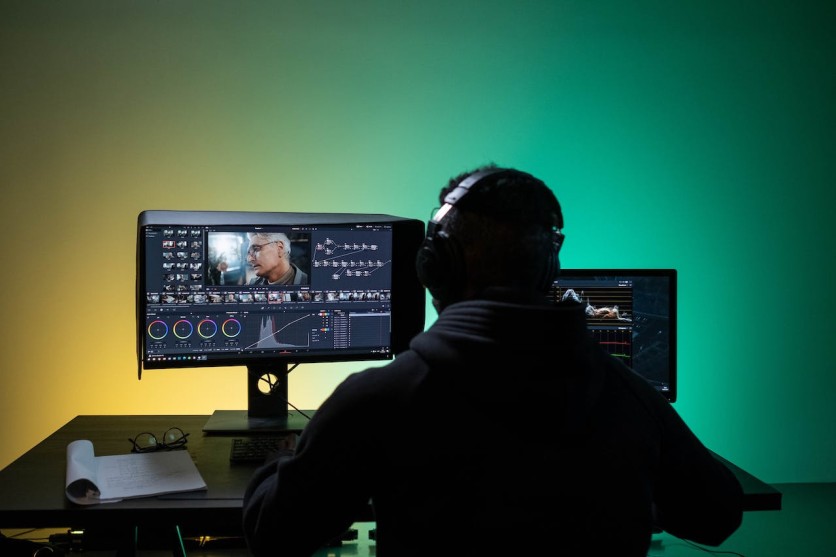
Forensic technology is a linchpin in modern policing, with body-worn cameras serving as crucial tools in generating an unprecedented amount of evidence. The sheer volume of evidence generated by these devices, however, can be overwhelming, requiring specialized skills and resources for effective management and analysis.
Smaller police departments often struggle with the demands of redacting and releasing this footage, primarily due to a lack of resources.
There is another problem: a gap in understanding of digital video redaction. Both within law enforcement agencies and among the public, there's been a need for education about the implications of this rapidly advancing field.
With a keen grasp of these needs, Focal Forensics has been at the forefront of media redaction services. Specializing in audio, video, and image analysis, the company, spearheaded by Steve Bufalino and Zac Giammarrusco, has provided unparalleled support to law enforcement agencies across the county grappling with the complexities of digital evidence.
"Seeing a clear market need, especially with the increasing ubiquity of recording devices and the technical skills required to handle media evidence, we decided to try to make a difference," Bufalino says. "We aim to educate people about the effective use of this media and the challenges surrounding video redaction."
Giammarusco emphasizes that the biggest bottleneck for police is in releasing body-worn camera footage while maintaining privacy and transparency. Though the public tends to demand immediate access to the footage, safeguarding private and sensitive information—especially when it pertains to protecting witnesses—is crucial.
"The police often lack the tools and workforce to effectively redact footage before release. Steve and I have made great efforts in helping these departments build transparency and in educating them on the processes and ways to improve their video redaction programs," he says.
A fundamental aspect police departments need to grasp, according to Focal Forensics, is the precision required in video redaction. Clear guidelines on what needs to be redacted and why are essential in ensuring privacy is upheld while adhering to legal standards.
"Each state, and even individual departments within the same state, have slightly different redaction requirements. This is all very new territory for most, and they're trying to navigate it as best they can," says Bufalino.
Redaction guidance is another area where clarity is needed. Giammarusco shares that each state has different statutes on what needs to be redacted, and frequently, neighboring departments will interpret the laws slightly differently. It often takes a legal team to decipher and interpret some of these bills regarding redaction and privacy laws.
This is why the idea of transparency can be a lot more complicated than some would anticipate. "It's not just about compliance with the laws; It's about respecting privacy rights all while maintaining the integrity of digital media evidence," Giammarusco says.
He adds that the accuracy of redacted footage is non-negotiable. Even a single frame of improperly redacted material can trigger legal and privacy complications. In essence, anything less than 100% accuracy could be a breach of the public's trust.
"A 10-minute body-worn camera video shot at 30 frames per second has 18,000 frames where private information could be exposed. Making an error within just one of these frames is simply unacceptable and cannot happen," Bufalino remarks. "The precision of our redaction work over thousands of cases is due to highly trained professionals with a keen eye for detail."
The Focal Forensics founders also highlight that some states require police departments to release footage within a certain timeframe or at least send a confirmation that it's being processed—a not-so-simple task when there are hundreds of hours of video waiting to be analyzed. Policymakers have often rushed to implement body-worn cameras without fully considering the process, costs, and redaction requirements, while the police continue to struggle with tight budgets.
"This lack of foresight is, in my opinion, the biggest challenge. This is why we have gone out of our way to educate as many departments as possible about redaction processes and the technology involved to ensure they are performed seamlessly."
On the other hand, Focal Forensics has been equally dedicated to educating the public, both in terms of respecting privacy laws and understanding their rights to request body-worn camera footage.
Some states, like California, are very progressive in allowing requests for body-worn camera footage, but this openness, according to Bufalino, can be a double-edged sword. "While it's good to have access, there has to be a balance. For example, someone may request eight years of John Smith's body-worn camera footage. If the department is legally obligated to provide that footage and certain information needs to be redacted prior to release, this can create a huge strain on the department."
More importantly, Giammarusco asserts that the public often has a right to request body-worn camera videos through an open records request, depending on the state. These requests really shouldn't be abused or used for monetary gain on something like a YouTube channel.
As Giammarusco says, "Every step we take in educating law enforcement about redaction, and the public about transparency, brings us closer to a society where technology enhances justice and accountability, rather than complicating it."
ⓒ 2025 TECHTIMES.com All rights reserved. Do not reproduce without permission.





